- Preview
- Stages 1-9
- Stages 10-15
- Stages 16-21
Jonas Vingegaard’s average daily time gain over Tadej Pogacar over the first two weeks of this year’s Tour de France was less than half a second. He improved on this rather dramatically over the next two days. While the Dane was frequently second by seconds, by the end of three weeks he was first by minutes.
As I said last week, the shape of this race was Pogacar reliably gaining seconds with his faster finish, while Vingegaard waited for opportunities to attack earlier in the day with a view to perhaps gaining minutes. It was death by a thousand paper cuts versus death by occasionally having a limb lopped off.
The Stage 16 time trial brought a brutal limb-lopping. Stage 17 then saw Pogacar pretty much cleft in twain.
The time trial
While Pogacar repeatedly demonstrated he was capable of a higher top speed than his rival, at no point did he ride at a sustainable pace that Vingegaard could not match or improve on. Small gaps were created and held – or sometimes closed – but he was never able to ride away.
The 22km time trial was a longer, sustained effort. This is Vingegaard’s thing and he utterly annihilated every other rider in the race.
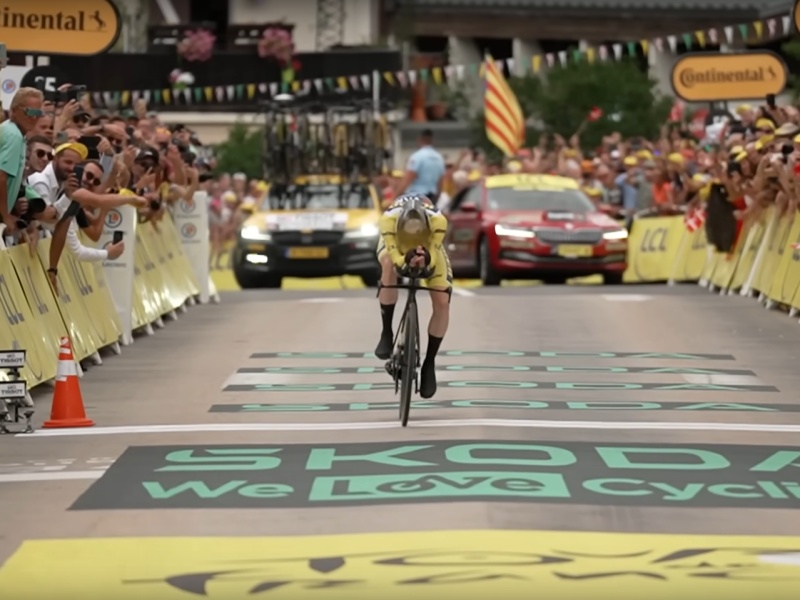
Wout van Aert is a freakishly good cyclist and he went all out for the win. He came third. Pogacar was about five per cent faster than him, which is huge… Vingegaard was almost 10 per cent faster.
As a measure of his superiority, Vingegaard still managed to gain time on the final climb even though Pogacar took the tactical decision to switch to a lighter bike.
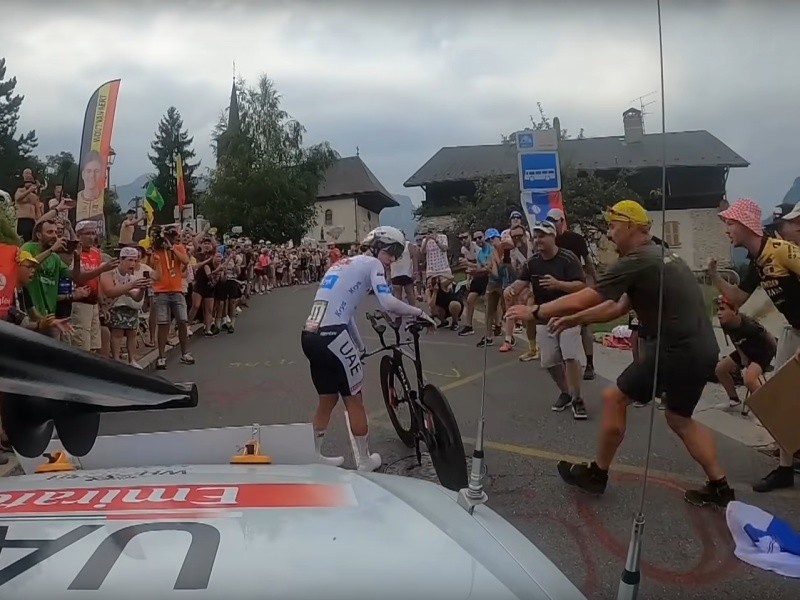
It’s generally quite hard to see how tired a rider is. Fatigue accumulates invisibly and you can quite often come up with an alternative explanation for why something went the way it did. When week two had ended with Pogacar failing to create a gap with his trademark late attack, some concluded he hadn’t really given it his all as there were no time bonuses to gain.
Looking back, hindsight encourages a different view. Maybe that non-event of an attack was a sign that all of the efforts were starting to stack up in his legs to the extent that he could no longer outdo Vingegaard with even the short hard efforts at which he is ordinarily more capable. While the two men had mostly ridden side by side those first two weeks, it seems one had mostly been more comfortable than the other and the man in white had perhaps spent a lot more minutes operating at his limit.
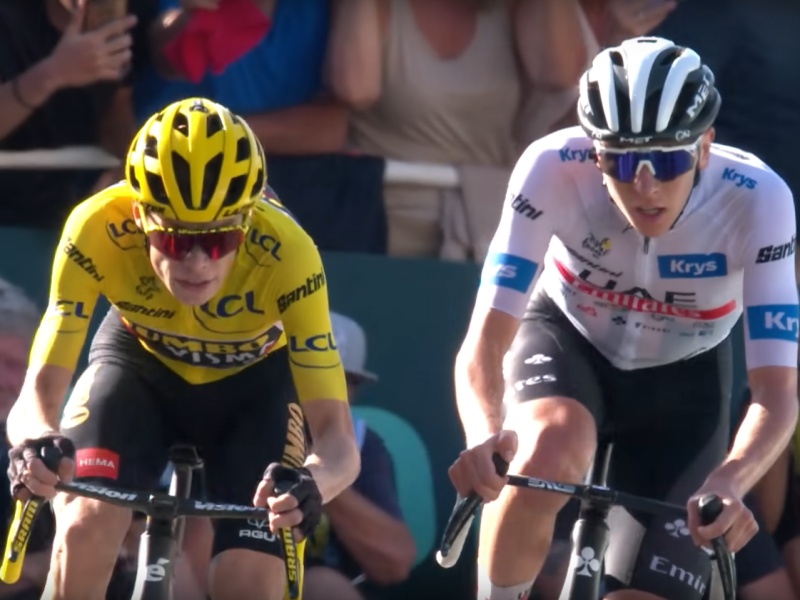
With no drafting and the only pace option being “as fast as you can” the time trial is where those differences showed. Pogacar had busted a gut to whittle Vingegaard’s lead down to seven seconds, only to lose 1m38s while delivering what he thought was a pretty good ride.
Much worse was to come.
The Col de la Loze
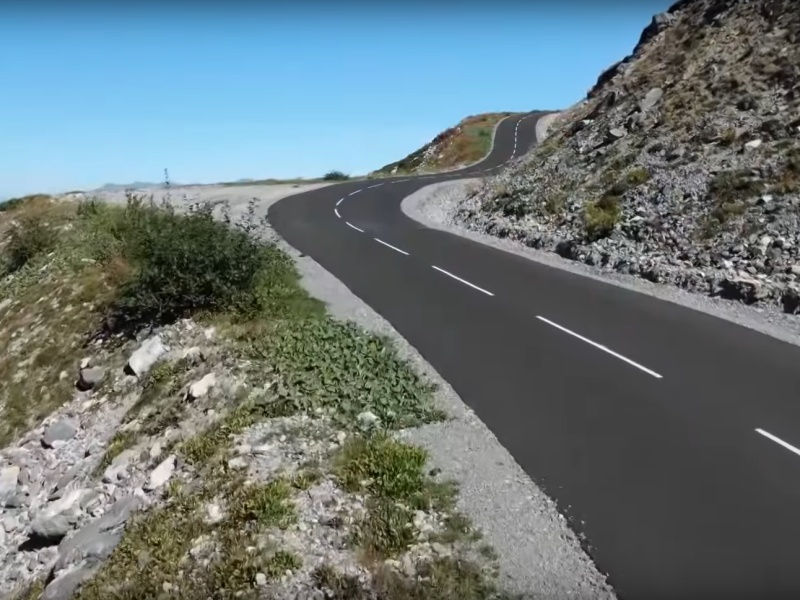
The Tour de France delivers its fair share of brutish climbs, but the Col de la Loze always looks to me to be in a class of its own. It’s not so much that you’re going uphill pretty much solidly for 28km. It’s not so much that the last few kilometres average double-digit gradients. It’s that those higher slopes, at over 2,000m above sea level, change gradient markedly every 20 or 30 metres. You’re in and out of the saddle, changing gear constantly, never in any kind of rhythm and you have no real say over your own effort.
The Col de la Loze dictates to you how you’ll have to ride, so imagine how it must feel to see your overall rival calmly drifting away from you with 7.5km of it still to go.
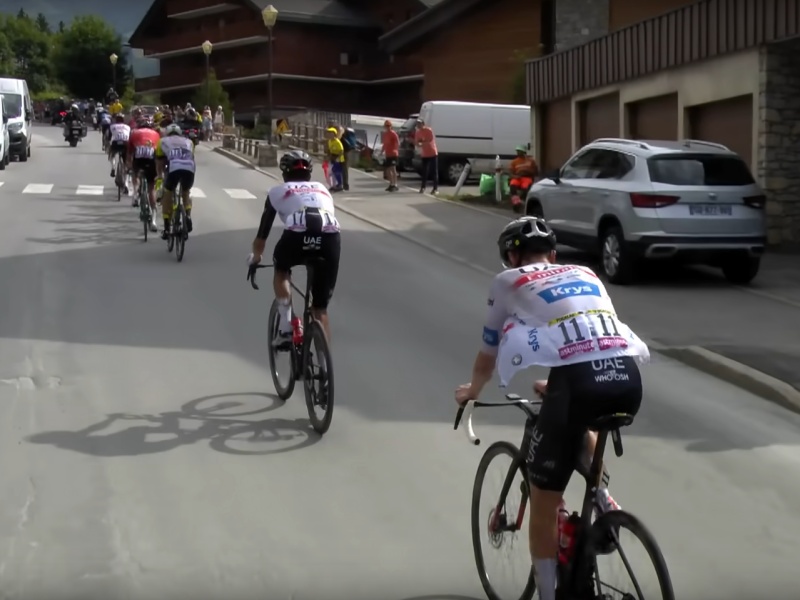
This is what happened to Pogacar. His jersey was open, he had nothing left to give and in the span of barely an ad break, Vingegaard was one, two, three, four, five minutes ahead of him.
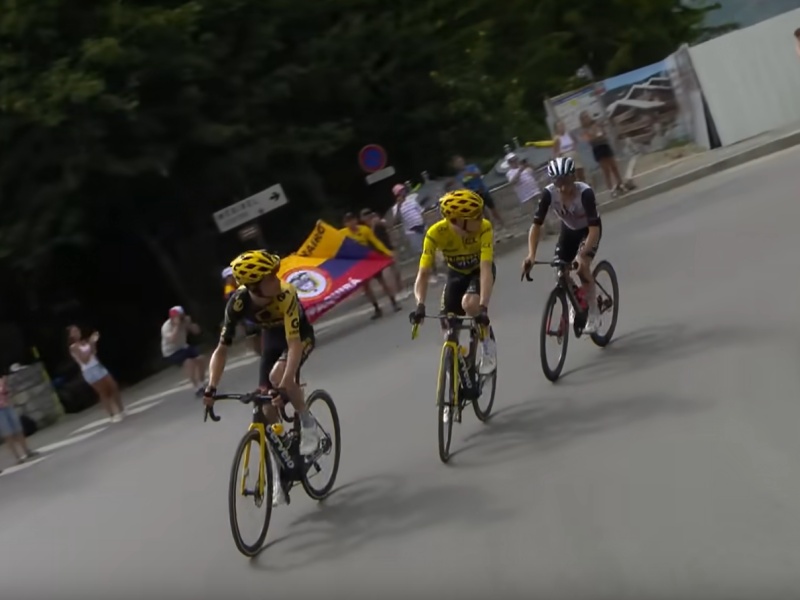
It was Stage 17 and there was still a mountain stage to come, but as a sporting competition, the Tour de France was over. Pogacar’s total implosion also meant that team-mate Adam Yates was allowed to ride on without him to cement the third place he’d nipped into the day before.
The stage was won by 25-year-old Austrian Felix Gall from the break. He would also ride strongly on the final mountain stage later in the week and ultimately finished eighth overall.
The rest of the race
Jasper Philipsen is a slightly odd green jersey winner. While clearly the best sprinter in the race by some distance and seemingly a rational person off the bike, he at times demonstrated bizarre self-importance during stages and I didn’t honestly feel too bad that he failed to win any more stages.
On Stage 18, for example, Philipsen had a go at Pascal Eenkhoorn for trying to head off and join the established three-man break up ahead. After realising that he rides for a different team and can frankly do what he likes, Eenkhoorn duly ignored the Belgian and made a second attempt. His actual team-mate, Victor Campenaerts, then dropped back from the break to lend some assistance.
Campenaerts did more than anyone to turn this stage finish into probably the most exciting of the race. With a Philipsen-laden peloton bearing down on the four of them, he just absolutely buried himself trying to keep his companions away in the hope that Eenkhoorn could seal the win.
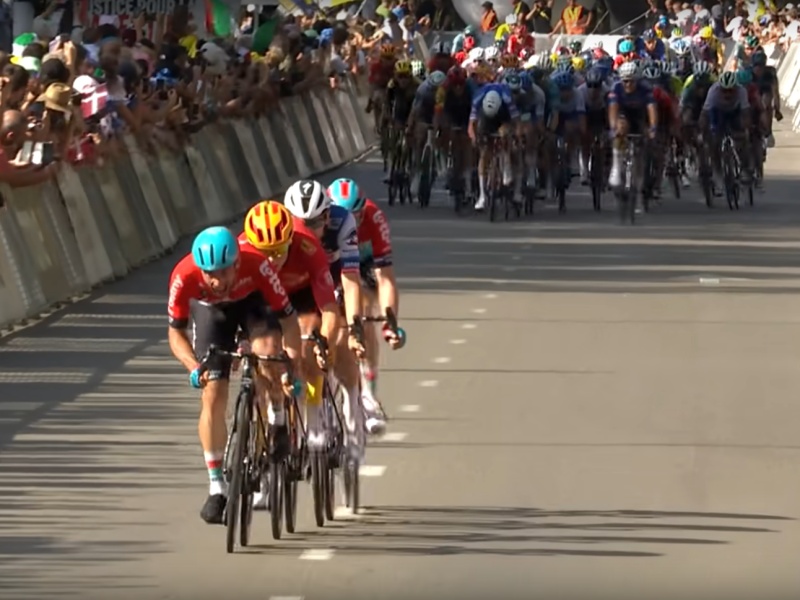
As it was, Kasper Asgreen edged Eenkhoorn out, but all three of Campenaerts’ companions finished ahead of the peloton by less than a second – which they definitely wouldn’t have done without him. Philipsen was of course best-of-the-rest and finished fourth. He would later be edged out by Jordi Meeus on Stage 21 on the Champs Élysées.
Game as anything, Campenaerts also managed to get into the break on Stages 19 and 20 as well, but didn’t win either. It feels wrong that he should finish with nothing, so I’ll give him my People’s Champion award, which I’m sure he’ll be delighted with.
On Stage 19, Asgreen was edged out by Matej Mohoric – again from the break – and then on Stage 20, Pogacar reprised his ‘fastest finisher out of the climbers’ trick for a consolation win that appeared to do more for his confidence than was perhaps justifiable. You’re not back to your best, fella. You’re just faster than Vingegaard over a distance of 200m.
This characteristic is how he ended up with two stage wins to Vingegaard’s one. The Pogacar v Vingegaard battle basically boiled down to stage winner v Grand Tour winner. Pogacar had the faster finish and could consistently gain seconds, but when it was every man for himself for a 40-minute effort, Vingegaard just blew everyone away.
Here’s how they finished. If you’re feeling bad for Simon for failing to win the Yates jersey, remember that he’s the one who won the 2018 Vuelta a Espana.
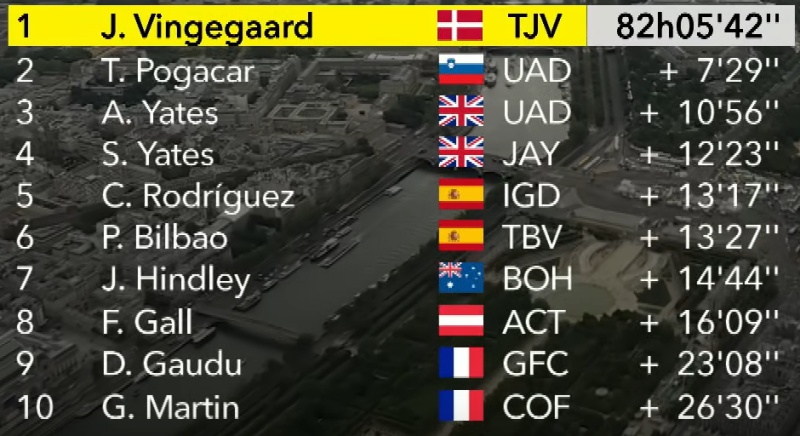
What’s next?
If you’ve enjoyed my preview and recaps, please think about buying me a coffee or Belgian beer to say thanks. Both are very important ingredients for the running of this website.
The next big race on the calendar is the Vuelta a Espana from August 26. I don’t think I’m going mad by deploying the word ‘doozy’ here, because it looks to me like it’s shaping up to be one. Vingegaard’s riding it; Giro d’Italia winner Primoz Roglic is riding it; last year’s winner Remco Evenepoel is riding it; and it sounds like Geraint Thomas will ride too.
Doozy!
If you want to follow the Vuelta with me, sign up for the email here. I’ll do a preview and then three weekly recaps which will almost certainly be a fair bit shorter than these Tour ones unless there’s an absolutely colossal response on the old Buy Me A Coffee page (and quite honestly probably not even then – these recent pieces have been a bit long).
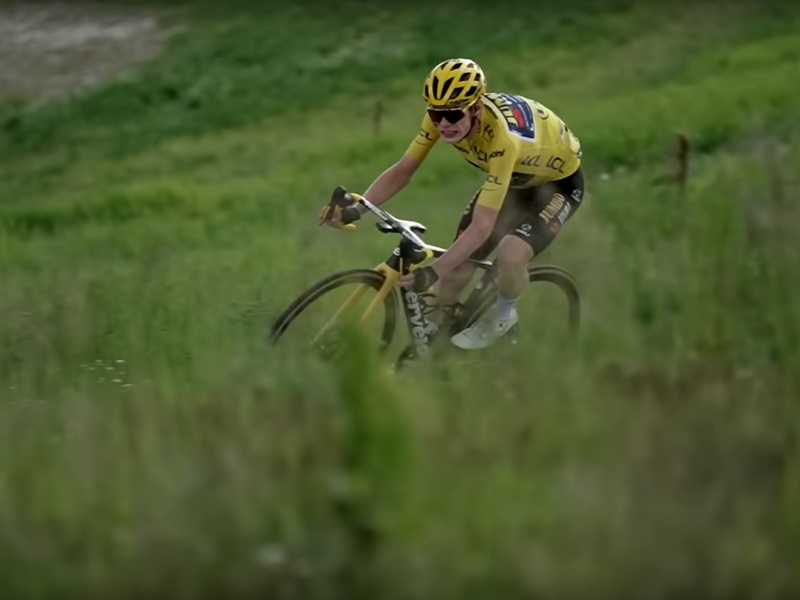
Leave a Reply